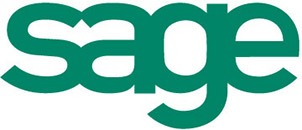Data releases in recent weeks from the Office of National Statistics (ONS) coupled with Bank of England decisions might make recent news about the economy seem a bit confusing. Understanding how this news affects businesses is important so let’s break it down.
Growth in the economy
The latest reports show that the economy grew by 0.6% from January to March 2024, which is good news! It is a 0.9% increase from the previous quarter and means the recent recession seems to have reached its end – businesses generally are doing well. However, swings over a short period underscore the necessity for businesses to adapt swiftly to change.
Interest rates and prices
Despite hopes otherwise, the Bank of England decided not to change the official interest rate because of ongoing concerns over inflation.
The Consumer Price Index (CPI) declined slightly from 3.4% in February to 3.2% in the 12 months to March 2024, but remains above the Bank’s target of 2%. While inflation is falling, it has not fallen as quickly as hoped earlier in the year.
The delay in reducing the official rate has led to implications for borrowing costs, and this has been seen in the recent uptick in the prices of 2-year and 5-year fixed rate mortgages.
What this means for businesses:
So, what does all this mean for businesses? Well, it’s a bit of a mixed bag. The good news is that the economy is growing, which is generally good for businesses. But, because prices are still going up faster than the Bank of England would like, they’re keeping interest rates the same. This may make borrowing money more expensive.
What businesses can do:
With economic shifts like these, businesses need to stay resilient and agile. Here’s a few things you can do:
- Strategic financial planning: Analysing finances, sales, and customer spending patterns can help you recognise trends. You can then work out what to do to head off potential risks or capitalise early on opportunities.
- Keep your costs streamlined: Make sure that you’re getting value out of what you pay money out for. Cheapest isn’t necessarily best and cutting costs by switching suppliers doesn’t always make for good business, however it’s often possible to identify areas to save some costs without interrupting your business.
- Keep customers happy: Make sure you’re offering good value for money to your customers, so they keep coming back to you. You might look at whether products or services you offer could be enhanced to appeal to more customers. Perhaps a change in pricing strategy could win more customers or be more profitable (not necessarily the same thing!). Or, maybe an adjustment to your customer care might lead to a better experience that builds stronger loyalty.
While recent economic indicators paint a mixed picture, businesses can still thrive by being smart and staying prepared for whatever comes their way.
A strategic plan can help you to keep your business focused on clear objectives through periods of uncertainty. If you don’t have one, or it’s been some time since you last reviewed it, why not ask us about our tools for creating a strategic plan?









